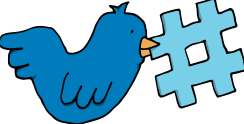In the very noisy world of social media, where Facebook and LinkedIn are slugging it out in the marketing ring to get big corporates on board, one channel is quietly forging a good niche in helping companies engage with their customers – Twitter.
In the very noisy world of social media, where Facebook and LinkedIn are slugging it out in the marketing ring to get big corporates on board, one channel is quietly forging a good niche in helping companies engage with their customers – Twitter.
For sure, Twitter is raising its profile significantly at the moment ahead of the planned IPO, but it would be fair to say that its commercial proposition is some way behind those aforementioned rivals and its potential as a business channel is underestimated for this very reason.
But savvy pharmaceutical companies are starting to recognise some of the unique aspects of Twitter that make it ideal for engaging with healthcare stakeholders, patients and the public. Way back in late 2011 (two years is a long time in social media!), Silja Chouquet, an external consultant to pharma on social engagement, recognised the potential for Twitter as a place to enhance corporate reputation and ‘humanise’ these global organisational behemoths. More recently, Daniel Ghinn, who blogs regularly on pharma use of digital channels, provided an update on how pharma use of Twitter was moving beyond broadcasting and into engagement.
Now, a new use of Twitter by pharma is being latched onto big time by the industry – the ‘tweetchat’.
For those not familiar with the concept, a tweetchat is a bit like a conference call on Twitter, with users convening at an agreed time to talk about a particular topic, which is denoted by a hashtag attached to every tweet. However, unlike an audio or live discussion, where only one voice can speak at a time, the written nature of Twitter means you end up with several overlapping conversations taking place at once, a process that has been likened to a cocktail party where you have multiple small groups engaged in separate conversations.
Some pharmaceutical companies have therefore embarked on running tweetchats to gain a better understanding of issues relating to particular disease areas and enhance their reputation within them. For example, Boehringer Ingelheim has run recent tweetchats within both the cardiovascular (#ChatAFib) and respiratory (#COPDChat) spaces (disclaimer: I was personally involved in moderating a recent #ChatAFib for them).
So why is pharma embracing Twitter conversation in this way when it has been so far reluctant to engage in multi-person online dialogue elsewhere?
I think there are a number of reasons including:
- The immediacy of Twitter makes it a much more ideal platform for active discussion than platforms such as Facebook and LinkedIn, where you end up waiting for responses and conversations are dragged out over time.
- Pharmaceutical companies can commit to dialogue within a predefined time window as part of running a tweetchat, with all participants understanding this is when a response is likely to be procured, thus managing expectations.
- Using hashtags allows them to engage with much broader audiences than just their followers and also align around specific events, such as disease congresses.
- The written nature of the discussion makes it easier to follow and interpret, plus gives it a longer shelf-life due to downstream transcripts, which are easily produced and engaged with.
- The theme and target audience can be specified in advance, plus written responses to inappropriate dialogue or issues such as adverse event reporting can be prepared in advance, as can downstream management processes, making it ‘compliance friendly’.
In addition, the visibility afforded by tweetchats, due to the ease of sharing and resultant social media amplification can be massive. With #ChatAFib, for example, analysis shows that the circa 400 tweets generated during the hour-long discussion garnered almost 2.5m impressions!
Ultimately, Twitter ticks all the boxes right now for pharma – it enables more ‘human’ interaction with people, boundaries can be set for both scope of discussion and timing and the written format makes it easier to control from a regulatory standpoint. Tweetchats are fast becoming the new form of advisory board discussion, in my view.
Potential investors in Twitter might, of course, ask how it can make money from this. I don’t know the answer to that one, but can pharma benefit from using it? That’s a definite yes.

